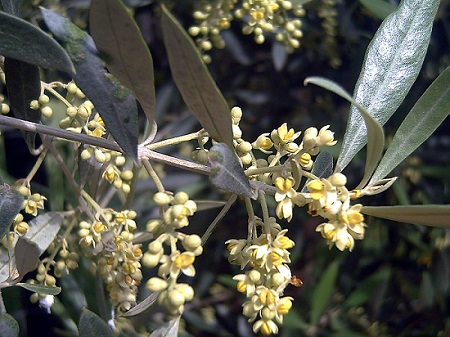According to legend, Athena and Poseidon were unable to agree which of them was to rule Attica. Zeus, the father of the gods, was summoned to arbitrate. He told the squabbling pair that he would declare as the victor whichever of them could show him the most beneficial discovery for mankind. Athena immediately commanded Mother Earth to grow a new and unusual tree, and the olive tree was created. Zeus was very pleased with this, and announced that the goddess had won.
The olive tree originally came from the region between Pamir and Turkestan. It spread from there throughout the entire Mediterranean region 5,000 years ago, and made its mark on more than the culinary habits of the native peoples, for in many regions the olive tree was revered in religious cultures. Its branches and fruit, as well as its oil, were all regarded as symbols of life, fertility, and light. The tree had particularly high status in Greece. Legend has it that the marriage bed of Odysseus and Penelope was in the hollowed-out trunk of an olive tree, and the statues of the gods – from Zeus to Athena – were rubbed with the precious oil to retain the spirits of the deities in their likenesses. Greek athletes anointed themselves with olive oil, and the victors of the Olympic Games were crowned with olive branches. The Spartans laid the dead to their final rest on beds of olive leaves.
A major industry grew up around the olive in imperial Rome. Olive oil even acquired its own commodity market, the arca olearia, to control the flourishing trade. Pliny tells us that no fewer than 15 varieties were available for purchase.
The religious and economic significance of the olive tree was so great that the Christian Church was unable to disregard it either. The olive branch became a symbol of peace, and the oil itself was used in religious rites such as Extreme Unction.
The Greek doctor Hippocrates had already recommended the use of olive oil for various illnesses. Following the decline of the Roman Empire, when the olive groves stood for the most part neglected, experiments continued in the monasteries. The oil was used to make skin care products; it was a reliable palliative for the itchy rash caused by stinging nettles; it helped alleviate headaches, stomach pains, and ear infections; and if necessary it was used against the ‘evil eye’. Chewing an olive leaf regularly strengthened the gums and kept the teeth white.
Today, the health-giving properties of olive oil have been scientifically proven. It is easily digested, is good for the stomach and gut, afford protection against diseases of the heart and circulatory system, and – by contrast with animal fats and vegetable fats – is not broken down into harmful substances, even when heated for frying food.
A genuine olive tree (olea europaea) can grow to a height of 30-50 feet (10 to 16m) and can live for over 1,000 years. The white blossom opens in Spring.










